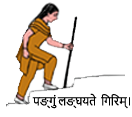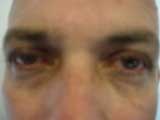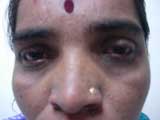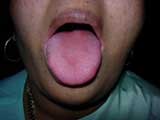Sjögren’s syndrome (pronounced as SHOW-grins syndrome) is a chronic autoimmune disease described by a Swedish doctor Henrik Sjögren in 1933. It is a disease of glands that secrete fluid and maintain moisture in various organs leading to dryness, especially in the eyes, mouth, skin, and vagina. The condition is nine times more common in females than males and occurs in their mid-fifties. Sjögren’s syndrome is the second most common rheumatologic disease after rheumatoid arthritis and affects about 1-4 adults per 1000. This disease can affect children too. These patients have a 16-18 times higher risk of developing lymphoma (a type of cancer) than the general population. Early Sjögren’s syndrome implies a disease duration of 4 years. However, the diagnosis is often delayed (usually more than six years) due to a lack of awareness in people as well as doctors. Sjögren’s syndrome can be primary or associated with other rheumatologic diseases (secondary) such as rheumatoid arthritis and systemic lupus erythematosus.
Features
Dryness, pain (generalized body pain and joint pains), and fatigue are the main features of Sjögren’s syndrome. Dryness of mouth is due to partial destruction of salivary glands and leads to significant disability. Lack of salivation leads to sticky and dry mouth, and the patient is required to drink water frequently. There is difficulty in swallowing solid food and talking for a long time. The tongue sticks to the palate and appears smooth and red. Lack of saliva also leads to dental caries, infections, and loss of teeth. Dryness leads to a feeling of sand or gravel in the eyes. There is a sticky, itchy, and burning sensation in the eyes, which may become red intermittently. This problem worsens in summer. Abrasions and perforation with loss of vision can complicate the situation in later stages. Impaired smell sensation due to dry nose, itching and dry skin, itching and burning vagina leading to painful intercourse, and dry cough due to dryness of the lungs are other features of this disease. Swelling of parotid glands (mumps-like) is often painless. Joint pain with or without swelling occurs in 60-70% of patients. Anxiety and depression are common. Enlargement of lymph nodes, muscle pains and weakness, skin rashes, and facial pain due to nerve involvement (trigeminal neuralgia) are other features that can occur in some cases. Other rare complications of Sjögren’s syndrome include the involvement of lungs, heart, kidneys, nervous system, and gastrointestinal tract. Hypokalemic periodic paralysis, a peculiar dangerous condition, is often associated with Sjögren’s syndrome.
Sjögren’s syndrome is a systemic disease involving multiple organs and varies in severity from patient to patient. It can remain steady or worsen with increasing dryness and involvement of internal organs.
Other causes of dryness
- Aging
- Prolonged use of contact lenses
- Anxiety and depression
- Fibromyalgia and chronic fatigue
- Drugs (over 400 drugs implicated) – atropine, morphine, codeine (used as cough-remedy), tobacco, cannabis, cocaine, some medications used in depression, blood pressure, allergy, and anxiety
- Viruses – HIV, Hepatitis C
- Radiation (for cancer) to head and neck
- Diabetes, high levels of lipids (cholesterol and others)
- Sarcoidosis, lymphoma
Investigations
Dryness of eyes can be easily measured by placing a small strip of filter paper under your lower eyelid (Schirmer’s test). Eyes are considered dry if the paper wets less than 5 mm in 5 minutes. Other tests are also available for the measurement of dryness of eyes and damage to the eye. Salivary flow can be measured by sialometry. The function of salivary glands can also be assessed by ultrasound examination, isotope scan (scintigraphy), or X-ray (sialography) tests.
There are no tests that can confirm the diagnosis. Blood tests such as antinuclear antibodies by immunofluorescence (50-80% positive), anti-SSA antibodies (50-80% positive), anti-SSB antibodies (30-50% positive), and rheumatoid factor (50-80% positive) can indicate the possibility of disease in a given symptomatic patient. ESR, a marker of inflammation, is often raised. Various other tests may be required for assessing organ involvement in this disease.
Treatment
Although there is no cure for Sjögren’s syndrome, early diagnosis and expert rheumatology management can improve various symptoms and prevent complications. No increase in mortality is reported in these patients. It is, therefore, imperative that lifetime treatment is essential for this condition. The disease varies from patient to patient requiring personalized management. Help from a dentist and an eye specialist is also needed. Pain can usually be managed with paracetamol. However, more potent pain killers may be required in some cases. Regular aerobic exercises help in alleviating fatigue. Anti-depressants are necessary in selected cases. In patients with organ involvement, immunosuppressant drugs are prescribed. These must be used under expert supervision. Rituximab, a biological agent, has shown promising results in cases of Sjögren’s syndrome. More drugs are being studied and are expected to be available in the coming years.
Care of mouth
- Drink sips of water regularly and maintain good hydration.
- Avoid frequent sugary fruit juices, and carbonated drinks as many of them are acidic. Citrus fruits and drinks (acidic) and irritants (tobacco, coffee, and alcohol) should also be avoided.
- Salivary flow can be increased by sugar-free gums and lozenges containing xylitol or lactoferrin.
- Use non-abrasive fluoride-containing toothpaste. Local fluoride gels are also helpful.
- Brush and floss after every exposure to sweets. Always brush before going to bed.
- Pilocarpine and cevimeline are helpful in most cases with functional salivary glands. However, they should be used with caution in patients with asthma, heart disease, glaucoma, and liver disease.
- Fungus infection (thrush) due to Candida albicans must be promptly treated. This infection manifests as distaste or metallic taste, burning sensation, and redness of the tongue. Replace the old toothbrush with a new one. Consult a dentist and start treatment without delay.
- Visit your dentist every 4-6 months.
Care of eyes
- Avoid dry surroundings such as air-conditioned rooms and heat (afternoons and summer season). Humid air helps – use humidifiers in the room.
- Avoid blowing air into your eyes (fans). Avoid smoke. Do not rub your eyes.
- Blink more frequently – this spreads your tear film more evenly.
- Wear glasses when moving out. Glasses should not have a nasal bridge. They must cover the entire eye (wrap-around like swim-goggles, safety glasses, or glasses with side shields). Moisture chamber glasses can also help.
- Try to avoid drugs that cause dryness.
- Artificial tear drops and ointments – Various formulations are available. Choose the one that helps you the most. Use eye drops before irritation develops. It is good to use a gel at night.
- Punctal occlusion blocks a duct that drains tears into the nostril. They can be temporary or permanent.




